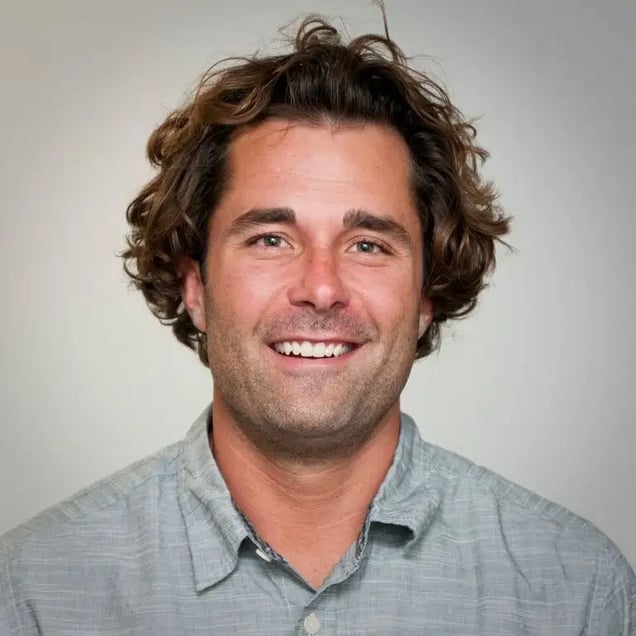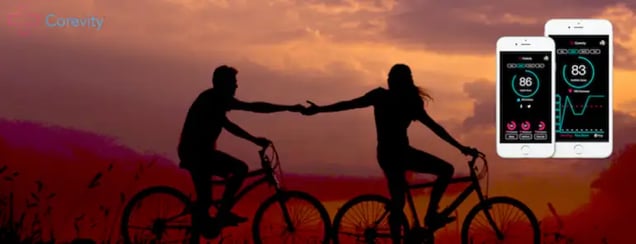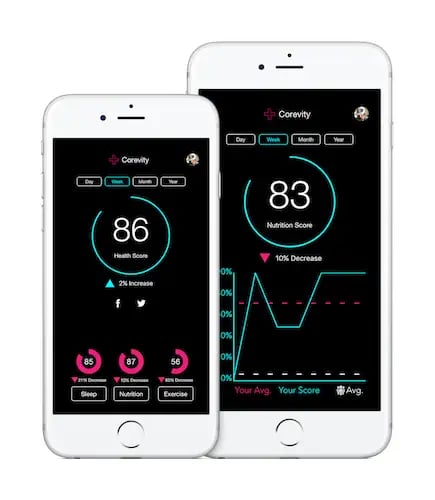You woke up with a brilliant idea. It seeped into your mind and is now screaming at you.

Work, family, and friends feel muted compared to your dashing new idea. Days seep into weeks and you notice it’s all you want to talk about. People comment on how energized you seem, so you jump like Wile E. Coyote into the abyss of startup life.
For me it was health. I thought I was healthy. I have always been an active guy and played college sports. When I was 22 I was training 6 days a week, 3+ hours a day. I was extremely fit.
Then, when I was 26, I developed high blood pressure that exposed my lack of health understanding (my favorite food was sandwiches). Rather than incur the cost and terror of taking pills, I changed my lifestyle.
I didn’t want to change my activity levels, so I started manually testing my nutrition inputs to increase my energy levels. I moved from processed food to cleaner, whole foods (meat & veggies) and now mostly organic (high vegetable, and low meat diet.).
But there was still no barometer or feedback system. It was all trial and error, no direct path.
Scientific reports were conflicting, and diets fads were trending and falling faster than I could keep up with. I had to test and test and test to get here. No app, wearable or service could give me a full picture of my health.

Hey, I’m Pat.
I set out so solve this. But before I get to what I created, let’s talk about how I did it. After all, I knew basically nothing going in.
You’re more prepared than you realize
You didn’t work for 5, 10, 15 years without a strategy. And it’s that same strategy you learned as a marketer, product expert, designer or professional cooker of Easy Mac in college that will get you 90% of the way there.
For example, I worked in marketing for 10+ years and it prepared me in every way to start a company. Marketing required tons of market research. So that’s where I started.
I reviewed all of the current offerings in my space (health & fitness) from product offerings, to technology integration to design. I used that to inform my company strategy then splintered it out into each sector: product, design, marketing and engineering. A few weeks later, I had my strategy mapped out.
You know more than you think you know. In any company your focus always spills into other areas. As a marketer, I was constantly involved in sales, product and design discussions. I never was a designer or product manager, but I knew where to start by growing that knowledge base into a fully developed skill.
The bad news is, when you submit a request, you are the only person to complete the task. It adds new anxieties to your day but over time will give you a very high level of confidence.
Pour a drink, make it a double
Pour a drink and learn a new skill (Photoshop, HTML, or Xcode).
These are going to be some really frustrating times. Find things you do well and focus on them during the day. Work the way you work best – for me that’s heads down and fast. Grind it out. Knock out your to do list as best you can. Feel happy and accomplished with your effort. Take a break, go for a run or just remove yourself from your work. Reward yourself.
I liked to try new things at night with a few drinks. When I made mistakes it didn’t seem as dramatic or frustrating. It changed the mood of the experience and allowed more room for creativity.
As a marketer, I had never learned Photoshop or any of the Adobe design products. I would ask a designer for help and she/he would bring my idea to life.
The problem was I could never perfectly communicate my idea externally, leaving the result good enough, but below the expectations of my imagination. That problem is now removed. You are a painter, here is your brush.
I started by designing my logo. I spent hours in the front of the TV with Game of Thrones or Breaking Bad streaming re-runs in the background. It was hours and hours of frustration and fun.
I yelled, I walked in circles, and I Googled the crap out of everything. It took time, lots in fact, but I got better. I figured it out and I created a simple clean logo I could use.
You can see the clear evolution below, the first logos weren’t pretty but they helped me learn my design process and Photoshop. I would use these new skills to design my product.

Beg, borrow & steal (well not the last one)
Find the shortcut for things that aren’t part of your core technology or product offering like your marketing website.
I am not a front-end dev expert and I needed a good website. So, I bought a bootstrap template for about $20. It was easy and simple.
Even without any HTML knowledge you can figure out how to edit or remove code and add some new brand images and get your website live on Github. Start with a simple “Coming Soon” page and work up from there. You can move faster and still get the result you need.
Clearly this strategy doesn’t work for every sector of your company, especially the proprietary offerings, but it allows you to focus more time on the items that matter.
Use any free resources available to you; don’t try to re-invent the wheel. There are so many today, but just in case you don’t want to waste your day on Google, here are some I used:
-
- Marketing Design: Canva
- Brand Imagery: Unsplash
- Email Template(s):Email on Acid
The more you can borrow (legally) the faster you can go and focus on the things that need your time.
Ask Jeeves
If you follow the strategy above you can get 90% of the way there. However, there will be things that you simply can’t learn (in the time required).
For me it was app development. I needed someone to bring my design and health algorithms to life. It was the last step on my journey before I could launch.
This is a huge, huge investment, not just from a monetary standpoint, but it might be the first time you or your founder(s) are working with an outside group.
Do your research, find a partner and get to your goal. Don’t rush into a bad relationship; don’t be afraid to swipe left for some arbitrary deadline.
This will likely be the first time you need to balance cost vs. quality. It’s a sucky dilemma, but part of what a good founder does. Remember, your goal is to get your product and idea to a place where it’s a yes or no question. Do users like it? Feedback will drive your success. The more you get, the better chance you have to win.

Better Call Saul
You can see the end and are almost ready to go. WAIT! You need to protect yourself.
Find a lawyer or legal site (I really like LawTrades and Clerky), and get your company, logo, technology and product protected.
You don’t want your idea to be exposed once it reaches the market. It’s a hard cost to bear, but it will help you sleep like lion, not a lamb.
The Fab 4
Bazinga! You just connected the four magic sectors – engineering, product, marketing & design. It’s like the Fab 5 but for start-ups. The result is a polished product in market with all of the support and complexity a 10-person company would have.
At Corevity we were able to deliver a fully polished app with supporting proprietary technology in less than 9 months. We created the first real-time health scoring model, like a FICO score for health.

Corevity is all in one health understanding. We add your nutrition, exercise and sleep data from your favorite apps to aggregate your health experience. Never manually input your health events again; just understand it and get on with your life.
The Corevity App makes health simple and actionable. We have a pretty funny launch video too, check it out:
Oh – and save some energy for post launch. The chances you are going to hockey stick on day 1 are very unlikely. This is just the starting point. You will need to continually revise your marketing plan to get users to really connect with your product.
Good luck!

